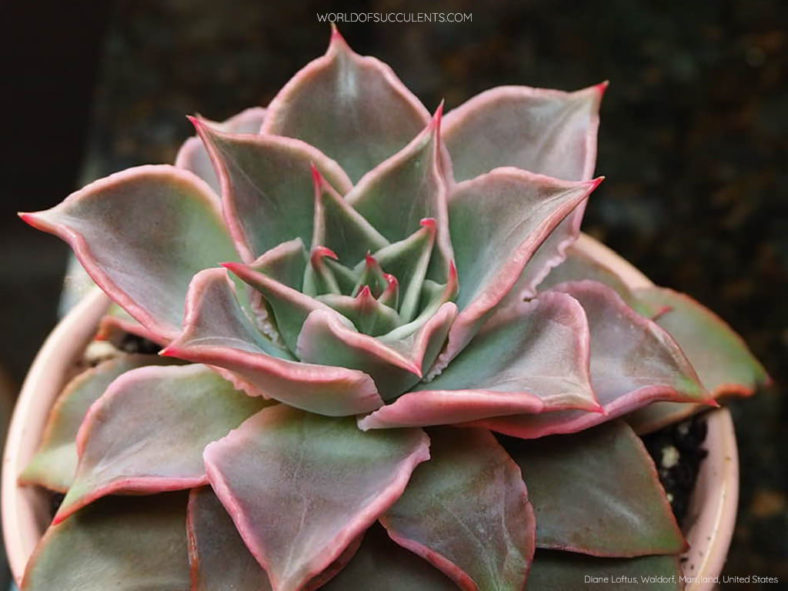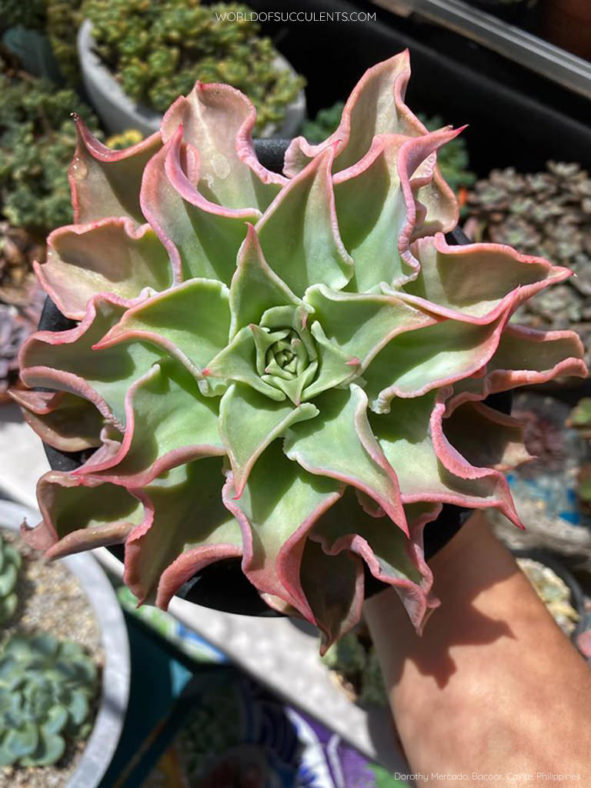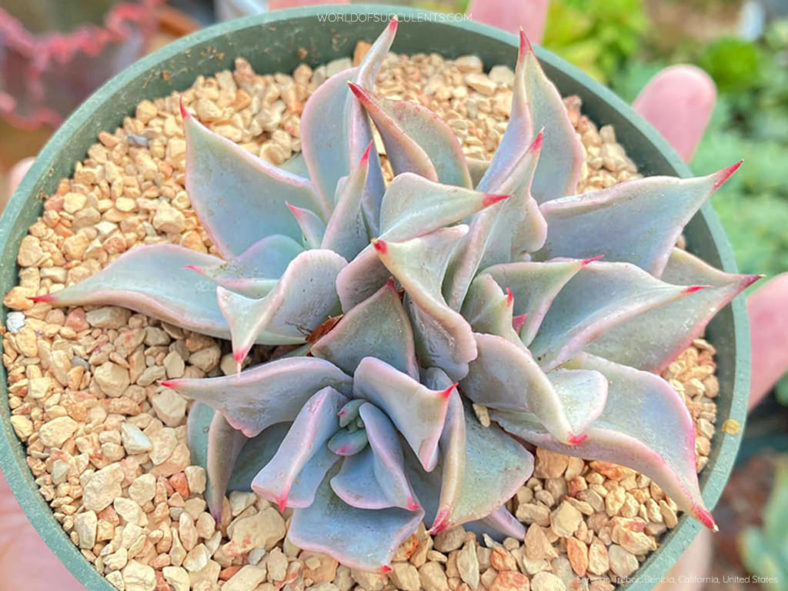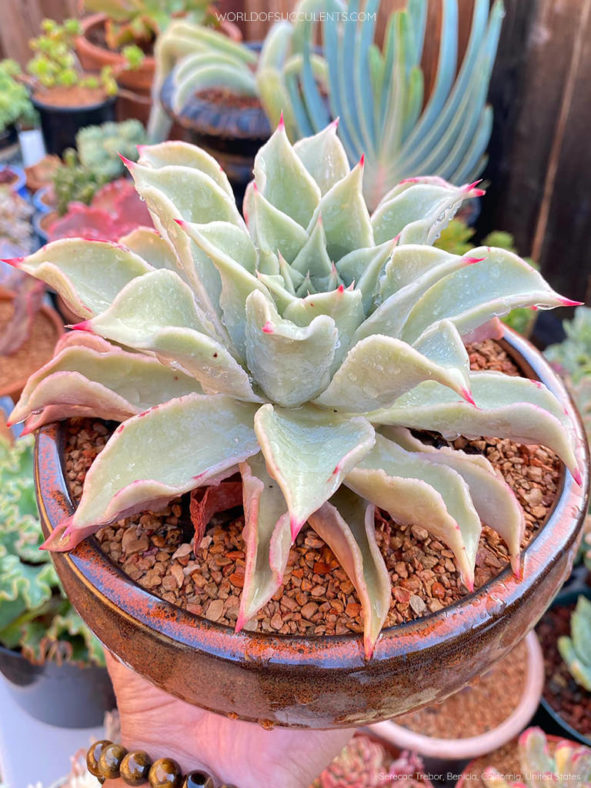Scientific Name
Echeveria 'Madiba'
Scientific Classification
Family: Crassulaceae
Subfamily: Sempervivoideae
Tribe: Sedeae
Genus: Echeveria
Etymology
The hybrid name honors Nelson Mandela, also known by his Xhosa clan name, Madiba.
Origin
Echeveria 'Madiba' is a chance hybrid that originated in Paco Serrano's nursery in Spain.
Description
Echeveria 'Madiba' is a magnificent slow-growing succulent that forms stemless, usually solitary or clustered, rosettes of rigid, triangular leaves with wavy edges and a reddish, spiny tip. The rosettes can reach a diameter of 12 inches (30 cm). The young plants have leaves with straight margins. After about two years, they begin to develop wavy margins, which become more pronounced with age. The leaves are light gray, tending to pink with shades of orange when exposed to bright sunlight.
The flowers are pink-orange on the outside and orange on the inside, and they appear in summer on slender stalks that can grow up to 12 inches (30 cm) tall.

Forms of Echeveria 'Madiba'
How to Grow and Care for Echeveria 'Madiba'
Light: E. 'Madiba' prefers full sun to partial shade. If you move your plant outside in the spring, do it gradually. The intense afternoon sun can cause sunburn. During the winter, when your E. 'Madiba' is inside, put it near the brightest window in your home. It will stretch if it does not have enough sunlight.
Soil: This succulent needs a potting soil mix that drains quickly. Many growers create their own mixes, but commercial potting mixes formulated for succulents work well.
Temperature: Although this plant can tolerate heat, intense sunlight at high temperatures may cause damage, especially if air circulation is insufficient. E. 'Madiba' is a tender succulent that must be brought indoors if there is a risk of freezing temperatures. It is hardy in USDA Plant Hardiness Zones 10a-11b, which have average annual extreme minimum winter temperatures ranging from 30°F to 50°F (-1.1°C to 10°C).
Watering: Provide moderate amounts of water from spring to fall. The "soak and dry" method is the preferred schedule for watering E. 'Madiba'. If you have saucers under the pots, empty the water after a short time. Water your plant just enough to keep it from shriveling during winter.
Fertilizing: E. 'Madiba' grows well without fertilizer but may benefit from extra nutrients. Use a slow-release fertilizer in spring, or a liquid fertilizer diluted 2 to 4 times and used less often than recommended.
Repotting: Repot the plant only as needed, in spring or early summer, when it is actively growing. To repot your E. 'Madiba', ensure the soil is dry before repotting.
Propagation: Like all Echeverias, this succulent is usually propagated from leaves or offsets. Spring is the best time to take leaf cuttings and separate offsets.
Learn more at How to Grow and Care for Echeveria.
Toxicity of Echeveria 'Madiba'
E. 'Madiba' has no reported toxic effects. It is safe for pets and humans, although it is not advisable to eat it.
Links
- Back to genus Echeveria
- Succupedia: Browse succulents by Scientific Name, Common Name, Genus, Family, USDA Hardiness Zone, Origin, or cacti by Genus
Photo Gallery
Click on a photo to see a larger version.


